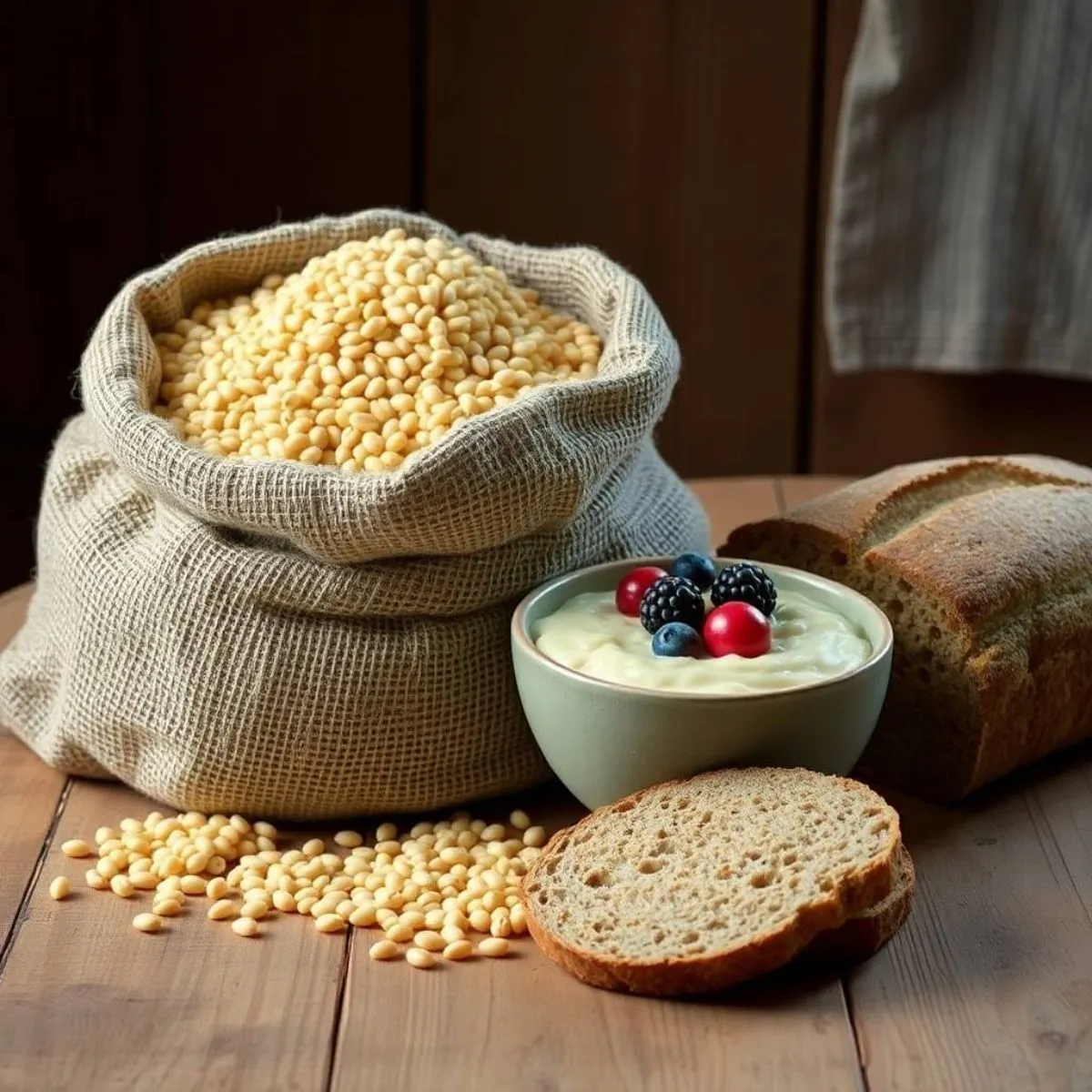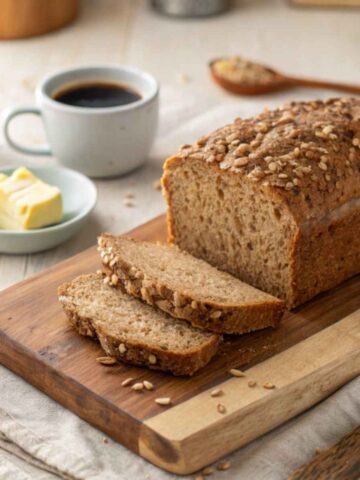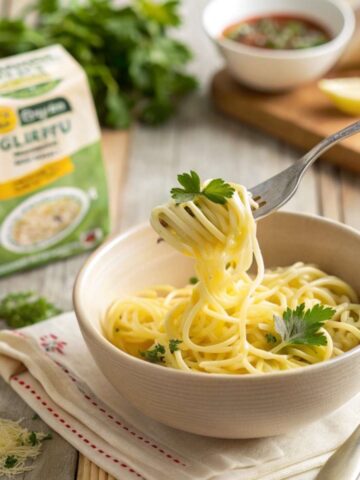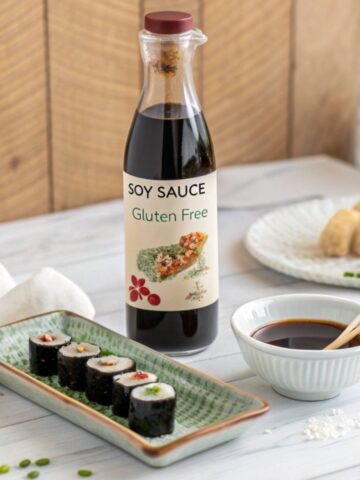In the world of gluten-free eating, finding versatile ingredients that pack both flavor and nutrition can feel challenging. One of these hidden gems is Buckwheat—a nutrient-dense, gluten-free option that often flies under the radar because of its confusing name. If you’re following a GF lifestyle, it’s time to clear up the misconception about Buckwheat. In this article, we’ll answer the question, Is Buckwheat gluten free? And show you why this powerful superfood deserves a spot in your kitchen.

Understanding Gluten
What is Gluten?
Gluten is a protein found in wheat, barley, and rye. It’s responsible for giving dough its elasticity and structure, but it’s also a trigger for people with gluten-related disorders. Suppose you’ve heard of celiac disease or non-celiac gluten sensitivity. In that case, you know how harmful Gluten can be to those who need to avoid it.
Who Needs to Avoid Gluten?
People with celiac disease must eliminate Gluten from their diet because even a tiny amount can damage their small intestines. For those with non-celiac gluten sensitivity, Gluten can cause digestive discomfort, headaches, and other symptoms. As awareness grows, more people choose GF diets for health and wellness reasons.
What is Buckwheat?
The Origins and History of Buckwheat
Buckwheat has been cultivated for thousands of years, originating in Southeast Asia and spreading to Europe and North America. Despite its name, Buckwheat is not related to wheat at all. It’s a pseudocereal—a type of seed used like a grain in cooking. Buckwheat has a slightly nutty flavor and, moreover, is popular in dishes like buckwheat pancakes, porridge, and soba noodles.
Is Buckwheat a Grain or a Seed?
Technically, Buckwheat is the seed of a plant related to rhubarb. It’s classified as a pseudocereal, meaning it’s used in cooking like a grain but not an actual grain like wheat or barley. This makes Buckwheat safe for those following a gluten-free diet.
Is Buckwheat Gluten-Free?
Buckwheat’s Gluten-Free Status
Yes, Buckwheat is naturally gluten free. Even though the word “wheat” appears in its name, Buckwheat is unrelated to wheat or other gluten-containing grains. This makes Buckwheat a safe option for those with celiac disease, gluten sensitivity, or anyone following a gluten-free lifestyle.
Why the Name “Buckwheat” Can Be Misleading
The name “buckwheat” can be confusing because it includes the word “wheat.” However, Buckwheat is not a type of wheat, nor does it contain Gluten. The name 'wheat' refers to its use as a grain in cooking, but its botanical origins differ entirely.
Nutritional Benefits of Buckwheat
Key Nutrients in Buckwheat
Buckwheat is a nutritional powerhouse, providing:
- High Fiber: Helps with digestion and keeps you full longer.
- Complete Protein: Buckwheat contains all nine essential amino acids, making it a rare plant-based complete protein source.
- Vitamins and Minerals: Buckwheat is rich in magnesium, iron, and B vitamins, all of which are essential for energy production and overall health.
Health Benefits of Including Buckwheat in Your Diet
Because of its high nutrient content, Buckwheat offers many health benefits:
- Supports Heart Health: The fiber in Buckwheat can help lower cholesterol levels, and its magnesium content supports heart health.
- Improves Digestion: Buckwheat’s high fiber content aids in digestion and can prevent constipation.
- Regulates Blood Sugar Levels: Buckwheat has a low glycemic index, meaning it doesn’t cause spikes in blood sugar, making it a good choice for people with diabetes or insulin resistance.
The Health Benefits of Buckwheat for Gluten-Free Eaters
High Fiber Content and Digestive Health
Many GF products made from refined grains often leave individuals lacking fiber. Additionally, incorporating whole foods can help address this deficiency. Buckwheat is an excellent source of dietary fiber, promoting healthy digestion and regular bowel movements.
Protein Powerhouse: Plant-Based Protein in Buckwheat
Buckwheat is a complete protein containing all the essential amino acids your body needs. Furthermore, this makes it an excellent option for vegetarians, vegans, and anyone looking to increase their plant-based protein intake.
Cooking and Using Buckwheat
How to Cook Buckwheat
Cooking Buckwheat is simple, and it can be used in a variety of dishes. Here’s how to cook it:
- Rinse the Buckwheat: Start by rinsing the buckwheat groats under cold water to remove impurities.
- Boil Water: Bring 2 cups of water or broth to a boil for every 1 cup of Buckwheat.
- Simmer: Add the Buckwheat to the boiling water, reduce the heat, and simmer for 15-20 minutes until the Buckwheat is tender.
- Drain and Serve: Drain any excess liquid and use the cooked Buckwheat in salads, porridge, or as a side dish.
Different Ways to Incorporate Buckwheat into Meals
Buckwheat can be used in many forms, including:
- Porridge: Cook buckwheat groats with milk or a dairy-free alternative for a warm, hearty breakfast.
- Salads: Add cooked Buckwheat to salads for a nutty flavor and extra texture.
- Side Dish: Serve Buckwheat alongside proteins like grilled chicken or fish for a complete meal.
Popular Gluten-Free Buckwheat Products
Buckwheat Flour: Uses in Gluten-Free Baking
Buckwheat flour is a popular gluten-free flour used in baking. It has a distinct, nutty flavor and works well in pancake recipes, bread, and muffins. It’s also naturally dense, making it ideal for recipes with a firmer structure. Buckwheat flour can be mixed with other gluten-free flour to achieve the desired texture.
A Versatile Gluten-Free Grain Substitute - Buckwheat Groats
Buckwheat groats, the hulled seeds of the buckwheat plant, offer versatility for cooking and various dishes. Moreover, you can use them like rice or quinoa by adding them to salads, and soups, or serving them as a side dish. They are incredibly versatile and provide a chewy texture that works well in many gluten-free recipes.
Buckwheat Noodles (Soba Noodles): Are They Gluten-Free?
Soba noodles are a popular Japanese cuisine staple made from buckwheat flour. However, not all soba noodles are GF. Many commercial soba noodles contain a blend of Buckwheat and wheat flour, so it’s essential to check the packaging and opt for noodles labeled 100% buckwheat or GF.
Buckwheat in Gluten-Free Baking
Buckwheat flour is widely used in GF baking. It performs well in many recipes because of its naturally dense and slightly nutty flavor. It adds a rich, earthy taste to baked goods that pair well with maple syrup, honey, or cinnamon.
How Buckwheat Flour Performs in Gluten-Free Recipes
Buckwheat flour has a hearty texture, which works well in rustic recipes like pancakes, waffles, and crepes. However, since buckwheat flour lacks Gluten’s binding properties, bakers often combine it with other GF flour, such as rice flour or tapioca starch, to provide structure in recipes like breads or cakes.
Recipes for Gluten-Free Pancakes, Bread, and Baked Goods
Some popular gluten-free recipes that incorporate buckwheat flour include:
- Buckwheat Pancakes: Light and fluffy pancakes made with buckwheat flour, perfect for breakfast or brunch.
- Gluten-Free Buckwheat Bread: A dense and hearty bread for sandwiches or toast.
- Buckwheat Muffins: Nutty-flavored muffins that pair perfectly with blueberries or chocolate chips.
Cross-Contamination Concerns with Buckwheat
How Buckwheat Can Be Cross-Contaminated with Gluten
Although Buckwheat is naturally gluten-free, there is a risk of cross-contamination during processing or packaging. Suppose Buckwheat is processed in the same facility as gluten-containing grains. In that case, it can become contaminated with traces of Gluten, making it unsafe for those with celiac disease or severe gluten sensitivities.
Certified Gluten-Free Buckwheat: What to Look For
Check the packaging for certified gluten-free labels to confirm that the Buckwheat you purchase is gluten-free. Furthermore, these labels confirm that manufacturers process the product in a facility free from gluten contamination and test it to meet the strict gluten-free standards required for individuals with celiac disease.
Gluten-Free Grains Similar to Buckwheat
If you want to add more gluten-free grains to your diet, you will find several options that share similar nutritional benefits to Buckwheat. Additionally, these grains can be used as substitutes in recipes.
Quinoa: A Gluten-Free Superfood
Quinoa is a gluten-free grain known for its high protein content and versatility. Similarly, like Buckwheat, quinoa is rich in fiber and essential nutrients, making it an excellent addition to salads, soups, and grain bowls.
Millet and Sorghum: Nutrient-Dense Alternatives to Buckwheat
Millet and sorghum are other gluten-free grains that provide excellent fiber, vitamins, and mineral sources. Both grains are mild in flavor and can be used in various savory and sweet dishes.
Amaranth: Another Gluten-Free Ancient Grain
Amaranth is another ancient grain that’s naturally f and high in protein. It has a slightly nutty flavor, similar to Buckwheat, and can be used in porridge, pilafs, and baked goods.
Using Buckwheat in a Gluten-Free Diet
Buckwheat is a versatile ingredient that works well in various dishes, from breakfast to dinner. Moreover, it’s an excellent gluten-free grain for adding texture, flavor, and nutrition to your meals.
How to Plan Meals Around Buckwheat
Planning gluten-free meals with Buckwheat is easy, as it pairs well with both savory and sweet flavors. Additionally, you can use buckwheat groats in grain bowls or salads or try buckwheat flour for GF baked goods.
Pairing Buckwheat with Other Gluten-Free Foods
You can combine Buckwheat with various gf foods, such as vegetables, legumes, lean proteins, and other gf grains like quinoa or millet. Moreover, you can serve Buckwheat as a side dish with grilled chicken or toss it into a hearty vegetable stir-fry.
Is Buckwheat Paleo and Keto-Friendly?
Buckwheat’s Role in Paleo and Keto Diets
While Buckwheat is gluten-free, it may not fit into specific diet plans like paleo or keto. The paleo diet excludes grains, including GF ones, making Buckwheat unsuitable for a paleo-friendly lifestyle. However, some people following more flexible paleo diets may include Buckwheat due to its nutritional benefits.
Gluten-Free, But Is It Low-Carb?
Buckwheat does not qualify as a low-carb food, so it does not suit strict ketosis. Nevertheless, you can still enjoy Buckwheat in moderation if you follow a moderate or flexible low-carb plan, particularly in its flour form for baking.
Buckwheat Recipes for a Gluten-Free Diet
Buckwheat is a versatile, GF ingredient that works well in many delicious recipes. Additionally, here are two simple and nutritious buckwheat recipes you can try.
Gluten-Free Buckwheat Pancake Recipe
Ingredients:
- 1 cup buckwheat flour
- One tablespoon sugar
- One teaspoon of baking powder
- 1/2 teaspoon salt
- 1 cup milk or dairy-free alternative
- One large egg
- Two tablespoons melted butter or oil
- 1 teaspoon vanilla extract
Instructions:
- Whisk together the buckwheat flour, sugar, baking powder, and salt in a bowl.
- Whisk the milk, egg, melted butter, and vanilla extract separately.
- Combine the wet ingredients with the dry ingredients and mix until smooth.
- Heat a non-stick skillet over medium heat. Cook the pancakes until bubbles form on the surface, then flip and cook until golden brown.
- Serve with syrup, fresh fruit, or your favorite toppings.
Buckwheat Porridge for Breakfast
Ingredients:
- 1 cup buckwheat groats
- 2 cups water or milk
- One tablespoon of honey or maple syrup
- 1/2 teaspoon cinnamon
- Fresh berries or nuts for topping
Instructions:
- Rinse the buckwheat groats under cold water.
- In a saucepan, bring the water or milk to a boil. Add the buckwheat groats and reduce the heat to low.
- Simmer for 15-20 minutes, stirring occasionally, until the Buckwheat is tender.
- Stir in the honey and cinnamon. Serve warm with your favorite toppings, like fresh berries or nuts.
Conclusion
Buckwheat is a gluten-free superfood that deserves a place in any gluten-free kitchen. Despite its name, Buckwheat is unrelated to wheat. It is entirely safe for those with celiac disease or gluten sensitivity. With its rich nutritional profile and versatile uses in sweet and savory dishes, Buckwheat can be an excellent addition to your gluten-free diet.
Whether baking with buckwheat flour, cooking buckwheat groats, or enjoying a bowl of buckwheat porridge, you’ll find plenty of ways to incorporate this nutritious seed into your meals. With certified gluten-free products available, you can confidently enjoy Buckwheat without worrying about gluten contamination.
FAQs
Yes, Buckwheat is naturally gf and safe for people with celiac disease. However, to avoid cross-contamination with Gluten, choose certified gf buckwheat products.
Can I eat Buckwheat if I have celiac disease? Yes, Buckwheat is naturally gluten-free and safe for people with celiac disease. However, to avoid cross-contamination with Gluten, choose certified gf buckwheat products.
Are buckwheat noodles gluten-free?
Yes, Buckwheat is entirely unrelated to wheat and does not contain Gluten. Therefore, it is safe for those with a wheat allergy.
You can make gluten-free pancakes and porridge or use buckwheat flour in baked goods like muffins and bread. Buckwheat groats can also be used in salads or as a side dish.
Buckwheat is rich in fiber, protein, and essential nutrients, making it a healthy choice. While quinoa and millet are also nutritious gluten-free grains, Buckwheat’s unique profile, especially its complete protein content, makes it a great addition to a balanced diet.

Gluten-Free Buckwheat Pancakes
- Total Time: 25 minutes
- Yield: 4 Servings 1x
Description
Light andfluffy buckwheat pancakes are perfect for a gluten-free breakfast. They have arich, nutty flavor and can be topped with syrup, fresh fruit, or nuts.
Ingredients
- 1 cup buckwheat flour
- One tablespoon sugar
- One teaspoon of baking powder
- 1/2 teaspoon salt
- 1 cup milk (or dairy-free alternative)
- One large egg
- Two tablespoons melted butter (or oil)
- 1 teaspoon vanilla extract
Instructions
- Whisk together the buckwheat flour, sugar, baking powder, and salt in a large bowl.
- Whisk the milk, egg, melted butter, and vanilla together in another bowl.
- Gradually mix the wet ingredients into the dry ingredients until smooth.
- Heat a skillet over medium heat and lightly grease it. Pour 1/4 cup of batter per pancake onto the skillet.
- Cook until bubbles appear on the surface, then flip and cook until the pancakes are golden brown.
- Serve with your favorite toppings.
- Prep Time: 10 minutes
- Cook Time: 15 minutes
- Category: Breakfast
- Cuisine: gluten-free
Nutrition
- Calories: 222
Keywords: buckwheat pancakes, gluten-free pancakes, healthy breakfast





Leave a Reply